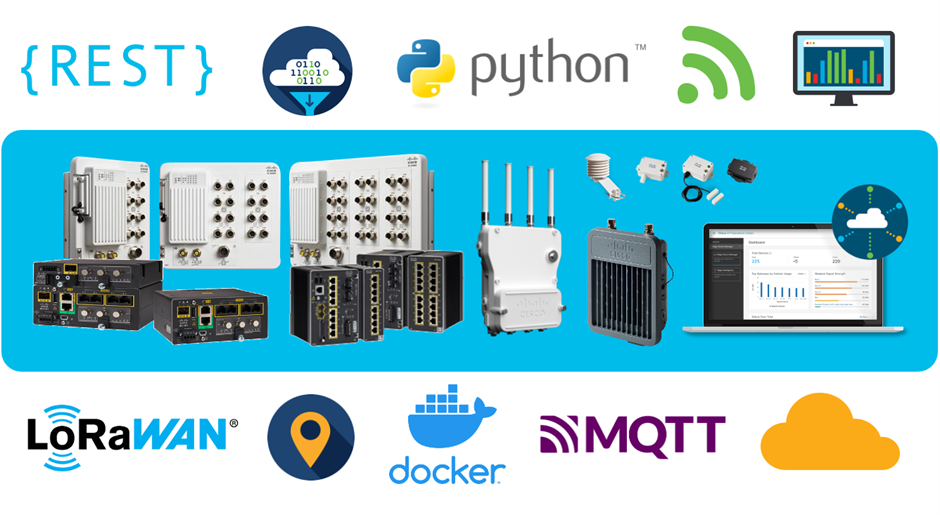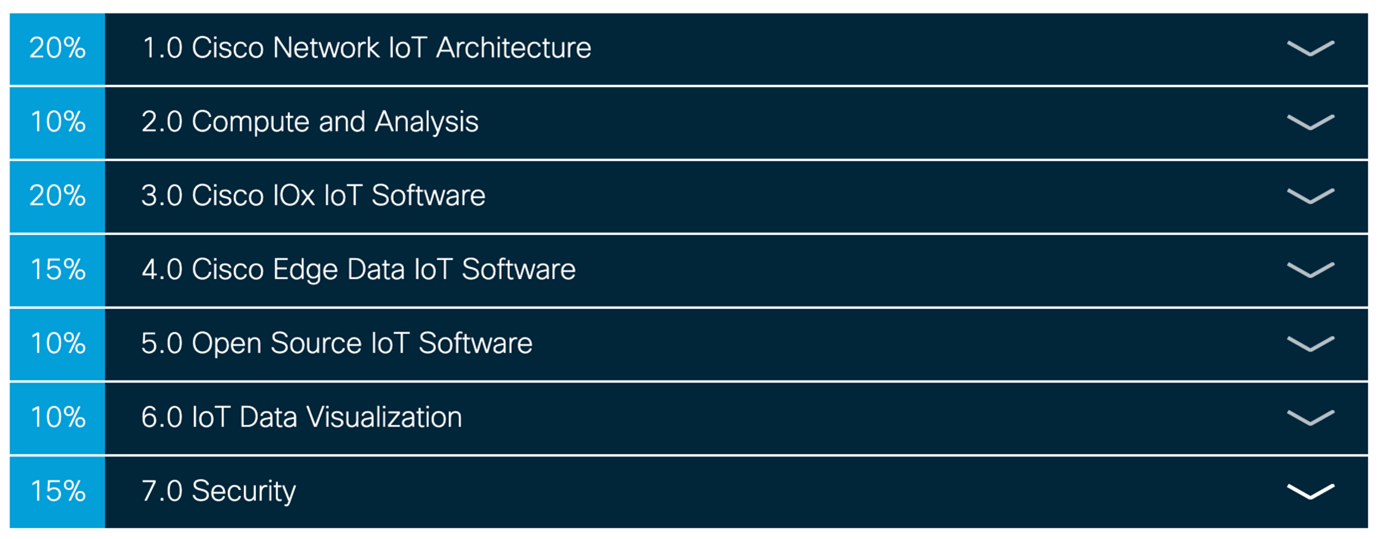Do you know when the first thing was connected to the Internet of Things? Some could say it was 1982 and a Coke vending machine at the Carnegie Mellon University. Since then, the IoT has come a long way and is getting adapted more and more, especially with the ongoing IT/OT convergence.
But let’s start simple: What does IoT exactly describe? Well, the main purpose of the IoT is to get digital presentations of analog things such as objects, environments, or systems. So basically, sensors are capturing analog events, turning them into digital data points which will then be collected in a data lake (sitting in the Cloud or data center).
This may sound very simple, but in most cases it isn’t. Many sensors and gateways speak different protocols, support different hardware and software and mostly every industry (manufacturing, utilities, transportation etc.) are going their own way when it comes to technology. Fortunately, there are some (de-facto) technology standards out there, such as LoRaWAN, MQTT, Bluetooth, and 4G/5G, which are accepted by the industries and make IoT projects easier to deploy. However, the end-to-end architecture from the things to the Cloud/data center is a long way which requires various skillsets.
 Some examples of IoT technologies
Some examples of IoT technologies
Certification opens new opportunities for you
This is where DevNet IoT and the DevIoT Certification can help guiding you through your learning journey. Getting a certification shouldn’t be a burden, it’s study content should motivate you and bring out your passion of the various (IoT) technologies. I can tell you from my experience, I really enjoyed studying for this exam! Besides, this knowledge is definitely not hurting your career and can bring up further job opportunities for you as an IoT System Engineer, IoT Architect, IoT Application Developer or extend your knowledge in your current role or at the beginning of your career.
Where to focus?
At first, let’s take a look at the exam itself and if it fits to you: First of all, the DevNet IoT certification is focused on connecting sensors, infrastructure and cloud in an industrial or enterprise setting (for example in transportation, manufacturing, utilities, defense, smart cities etc.).
Also, the certification aims for more software-oriented topic areas as you can see below from the exam outline. So, you definitely should have a general IoT/industrial networking architecture knowledge (Exam topic 1.0), but the main focus here is how to securely (7.0) connect various things, and aggregate, compute and visualize (2.0-6.0) the vast amount of data with Cisco and Open-Source technologies. Doesn’t this sound interesting?!
 Get the details on each of these topic areas here: https://developer.cisco.com/certification/exam-topic-iot/
Get the details on each of these topic areas here: https://developer.cisco.com/certification/exam-topic-iot/
Cisco certifications are not vendor specific
When taking this exam, you can expect a generic technological approach (including Open-Source technologies, standards, open data formats etc.), which also includes how Cisco IoT components are utilized. So, by studying for this exam, you are definitely not covering Cisco-only technologies.
The first step of a journey is the most difficult
If you are sure now to take on the certification, definitely go ahead to the study materials, and even if you are unsure about it, just check out some of the free content materials, learning labs, sandboxes (virtual environments for testing) and sample code we are providing, to see if you are interested in the content or not.
Personally, I would highly recommend for people who are already using any Cisco industrial products to go ahead and at least check out the study materials. But also, general and embedded software developers, (industrial) network engineers, infrastructure/cloud engineers who are involved in IoT projects and any engineer who is working on IT/OT convergence projects should definitely check out and see what the DevNet IoT Certification has to offer and how you can benefit from it.
DevNet IoT Certification Study Guide
A couple notes before we dive into the study guide:
- Don’t confuse the DevNet IoT certificate with the DevNet IoT course: The certification validates that you have the appropriate level of skills and knowledge to become a Cisco DevIoT specialist. The DevIoT course helps you with your study, but you still need to take the exam to get certified. It’s up to you how you would like to prepare for the exam.
- These materials should give you a good preparation and fundamental knowledge, but it does NOT mean that the materials are directly based on the exam questions.
So, with those disclaimers out of the way… here we go with…
The ultimate study materials, hand-picked for you, to
help you pass the DevNet IoT certification exam
1. Getting Started: Let’s start simply and warm-up with some basics
Get to know the basics of Python or any other programming language. There won’t be any specific questions about programming, but it is a good fundamental knowledge to know how programming languages work and what they can do within an IoT context. Here is a small Python tutorial selection:
Basics of REST API: Similar to the programming fundamentals it is necessary to know how REST APIs work. And don’t worry, it is pretty simple:
Read more about industrial networks and the CPwE architecture:
- Cloud Connectivity to a Converged Plantwide Ethernet Architecture
- Industrial networking introduction: This is an older video, but it will give you a feeling for how industrial networks differ from enterprise networks in office buildings.
- Showcase of how ruggedized a Cisco IE3400 IP67 switch is
Read more about the IT/OT convergence with ongoing projects:
2. Moving to the Edge: Now let’s focus on how you can develop and deploy “true” edge applications.
Learn more about Cisco IoT gateways:
Get started with Cisco IOx Edge Compute framework & Docker. Deploy your application on your local Cisco device or DevNet sandbox:
- Learn more about IOx and Cisco gateways
- IOx – Cisco IoT Application Development Learning Module
- IOx – Application Deployment and CICD for IoT
- Getting started with Docker
- Docker Containers 101
- IOx DevNet Sandbox
- IOx Introduction Video
Read more about the implementation in the Remote and Mobile Assets Design and Implementation Guide: Edge Compute
Watch a video of how you can easily connect a serial sensor to your IOx application and a Cloud-managed Cisco gateway
3. Protocols & Sensors: Dive into the various protocols of IoT, focusing on data exchange
Video: Cisco Wireless Technologies and Use Cases in Industrial IoT. This is very detailed, but helpful for you to get a good overview.
MQTT & Websockets:
- Introduction to MQTT and Websockets DevNet learning labs
- Beginners Guide To The MQTT Protocol
- What is MQTT and How It Works
AMQP:
LoRaWAN:
Bluetooth Low Energy:
3G/4G/5G:
OPC UA:
Modbus:
4. Various Cisco and Open-Source Software:
Cisco Edge Intelligence:
Cisco IoT Control Center:
- DevNet Sandbox
- Interesting interview about how Cisco IoT Control Center is used in cars
- What can you do with Cisco IoT Control Center APIs?
Cisco IoT Field Network Director:
Databases – where do you put your data? At the edge, in the cloud?
Data Visualization – get to know how you can visualize IoT sensor data:
5. IoT Security: As you know security is very important, especially when connecting many devices. The main goal here is to understand what tools are out there, how they work, and their benefits.
- Cisco Manufacturing Security for CPwE Networks
- What is Cisco Identity Services Engine (ISE)?
- Cisco Umbrella Demo
- Introduction to Cisco Stealthwatch
- Cisco Cyber Vision Overview
- Protecting your cloud users, data and apps with Cisco Cloudlock
Learning by Doing – Sample IoT projects to try on your own
S1) Simply send any sample data from your script (client) via an MQTT broker (e.g. Mosquitto) into any database (e.g. Telegraf + InfluxDB) and visualize them (e.g. Grafana)
S2) Create a Hello-World.py script which outputs a random Chuck Norris joke from the API and execute this in your own built Docker container. If you have access to Cisco Gateway Management, get all gateway names.
S3) Connect a virtual sensor to the Cisco Edge Intelligence broker and send the data to a local database. This whole sample project can be done within the DevNet sandbox:
S4) Get hands on a real Cisco industrial switch and deploy an IOx application on it via the webUI and ioxclient:
S5) Connect any sensor you have (real hardware or virtual), send the data via your deployed IOx Edge Application (on your local Cisco gateway or use the DevNet sandbox) to your local database or cloud instance.
- Virtual IOx environment (free)
- OPC UA Sensor Simulator
- Sample Modbus-MQTT App (IR1101, ARM based)
- Sample Modbus-MQTT App (IR829, x86 based)
Some sample test questions – can you answer them?
- In which scenarios would LoRaWAN be used instead of 4G in wireless communication?
- What is the difference between a PLC, I/O device and HMI?
- Is MQTT pull- or push-based? How does a MQTT broker handle data?
- What is the difference between Cisco IOx and Cisco IOS-XE?
- During sensor data collection, in which use cases would MongoDB, PostgreSQL and InfluxDB be used?
- When should you use a RTOS?
Feel free to write some answers in the comments section below.
I hope these study materials give you a good start to prepare for your DevNet IoT certification! Please let me know if it helps. All the best for your exam!
We’d love to hear what you think. Ask a question or leave a comment below.
And stay connected with Cisco DevNet on social!
Twitter @CiscoDevNet | Facebook | LinkedIn
Visit the new Developer Video Channel

Great detailed to the point on ojective for getting certificated and gain hands on experience in the field of IoT. Hats off to you
Long Range Wide Area Network (LoRaWAN) systems are used to transfer small amounts of data several miles or more. 4G can be used for long-range data transfer, but a service area with many IoT sensor nodes makes a cellular network cost prohibitative. With a cellular network, each IoT sensor node would require a modem and data service. LoRaWAN operates on the license-free industrial, scientific, and medical radio band.
Given the number of sensors that are going to be deployed along with the Massive Machine Type Communications (mMTC) business case that’s been put forth for 5G, I suspect the cellular providers will be chasing these types of opportunities.
Thank you, very helpful
any exam vouchers or promotion like DevNet class of 2020?
Florian,
Thanks for the great content and all the great links!
This looks like an excellent roadmap for getting immersed in the technology and available tools for learning.
Thanks again!
Cool stuff. I would recommend BACnet protocol too for anyone in the utility industry working with IoT gateways in building automation systems. In smart grid utilities will send a signal for demand response (open ADR) where the IoT gateway has alot going on with BACnet. At least here all of the sensor data is pulled from the building automation and commands are all BACnet.
This looks awesome! I’ll get started ASAP following this 😀
Absolutely great guide, definitely adds way much more color than the guide filling in the gaps for the exam prep. Thanks for putting this together Flo!